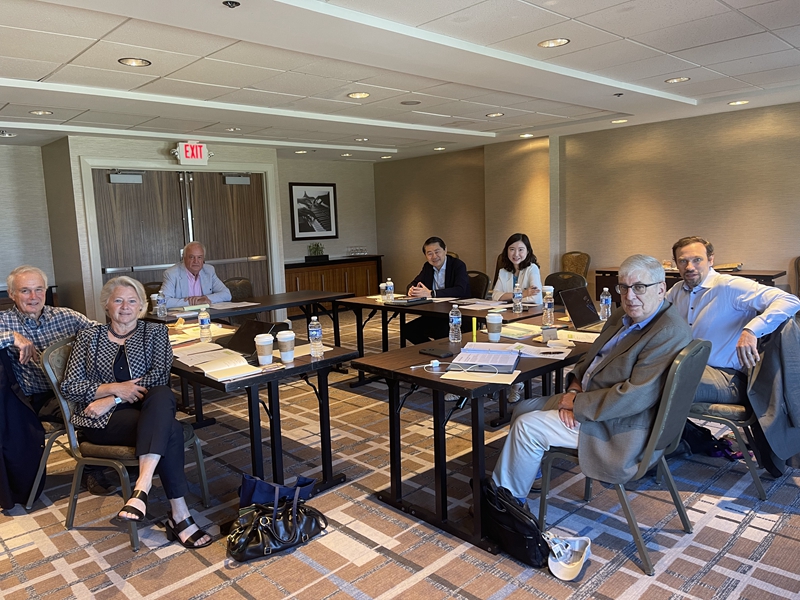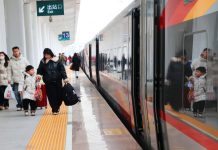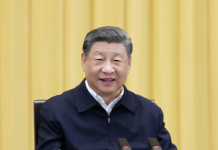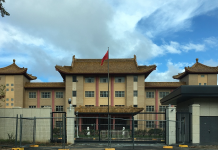
On November 30, Wang Wen, Executive Dean of the Chongyang Institute for Financial Studies at Renmin University of China, penned a heartfelt tribute to the recently deceased former U.S. Secretary of State, Henry Kissinger. In this reminiscent piece, Wang vividly recounted his first meeting with the statesman in 2009. The date was October 11, which marked the start of the first China-United States Track II high-level dialogue.
A journalist at the time, Wang found himself among a distinguished circle of retired policymakers and intellectuals in Beijing. The landmark dialogue, cochaired by former Chinese State Councilor Tang Jiaxuan and Kissinger, launched a series of continuous Track II communications between China and the U.S., a crucial step in cultivating mutual understanding and bridging gaps between the two nations.
Track II: China-U.S. synergy
Track II dialogue, a unique and unofficial form of diplomacy, primarily operates through exchanges between scholars and retired officials in a nongovernmental setting.
Track II communication enables open and honest conversations among professionals from different fields. These dialogues provide a platform for maintaining and enhancing communication on key issues and fostering a deeper understanding of cultural nuances.
A month following the first China-U.S. Track II high-level dialogue, then U.S. President Barack Obama embarked on his first state visit to China.
What Track II dialogues do is create a consistent thread of engagement, ensuring that trusted partners can continue their cooperative efforts even amid changes in domestic political leaderships of both sides. The flexibility and breadth of this approach allow it to achieve goals that are often beyond the reach of official diplomatic channels.
A shining example of the efficacy of Track II dialogue between China and the U.S. was the establishment of a dedicated mechanism in March 2019, specifically targeting the complexities of the digital economy.
This initiative was designed to address the ever-evolving challenges facing global organizations.
The dialogue was not only a platform for the identification of these challenges, but also a crucible for the development of joint strategies for Chinese and American companies to address them together.
Since its inception, this dialogue has demonstrated remarkable resilience and adaptability, convening annually without fail. Notably, even in the midst of the unprecedented challenges posed by the COVID-19 pandemic, the dialogue seamlessly transitioned to an online format, ensuring that the critical conversation between the two global powers continued uninterrupted.
The composition of the dialogue participants reflected a balanced mix of expertise and geographic representation, with an equal number of participants from the U.S. and China.
These individuals were not just experts in their fields but also included corporate representatives from different industrial sectors, bringing a rich tapestry of perspectives to the table.
At the end of each dialogue session, a crucial process unfolds: the drafting of a consensus agreement. This document serves as a tangible record of the discussions and recommendations, a blueprint for potential strategies and cooperative efforts.
This agreement is not just a ceremonial gesture, but a practical tool that is shared with relevant agencies and offices within both sides. It is a testament to the continued commitment of the two nations to promote understanding and cooperation through the power of dialogue.
This candid dialogue mechanism has yielded practical results. The fifth Track II dialogue, led by the National Committee on U.S.-China Relations (NCUSCR) and the China-U.S. Green Fund, a market-based private equity investment fund jointly instigated by Chinese and American political and business leaders, convened virtually on December 20, 2022, and February 14. Participants from China and the U.S. reached consensus on key principles in the data, financial services and semiconductor sectors.
Both sides recognized the need to balance national and economic security with the goal of open markets based on transparent, enforceable international economic norms. Recognizing the challenges of the current political climate, they proposed smaller, achievable cooperative steps in specific areas to promote practical, mutually beneficial cooperation. The dialogue also recommended exploring joint efforts in emerging sectors, including the digital economy, green energy, healthcare and food security, to benefit the people of both nations.
More than words
In the nuanced fabric of Sino-U.S. relations, the role of think tanks emerges as both critical and transformative, acting as dynamic centers of policy innovation and research. These institutions are not merely repositories of knowledge but vibrant forums for intellectual exchange, playing a central role in the architecture of Track II dialogue.
Their research and insights are instrumental in shaping the undercurrents of bilateral communication, laying the groundwork for more nuanced, in-depth discussions on global affairs.
The years 2022 and 2023 witnessed a remarkable surge in activity from Chinese think tanks like the Center for China and Globalization (CCG), Renmin University of China’s National Academy of Development and Strategy (NADS), and the Center for International Security and Strategy at Tsinghua University.
These units led various forms of engagement with American partners, including visits to Washington D.C. and New York City for face-to-face discussions with influential institutions such as the Center for Strategic and International Studies, the Carnegie Endowment for International Peace, a nonpartisan international affairs think tank, and the NCUSCR.
Wang Peng, a research fellow at NADS, visited Washington, D.C., from November 5 to 10. Together with colleagues, Wang engaged in constructive dialogues at prominent organizations such as the Elliott School of International Affairs and the Environmental Defense Fund.
A recurring theme in these discussions was the keen interest of American scholars in China’s economic development. Wang found this to be a topic of intense focus.
In a revealing conversation with Beijing Review, Wang observed some divide in the American understanding of China, often shaped by U.S. media and government narratives.
However, he also noted a strong desire among many U.S. experts for alternative perspectives, highlighting their eagerness to integrate insights from Chinese scholars into their analyses. “This underlines the unparalleled value of face-to-face interactions, offering a richness of information that digital communication simply cannot match,” Wang remarked.
Similarly, Wu Shicun, Chairman of the Academic Committee of the National Institute for South China Sea Studies, underscored the critical need for dialogue between American and Chinese think tanks during a conversation with Chinese news portal ThePaper.cn, at a think tank-themed book launch event at CCG on August 17.
In June, Wu attended a closed-door seminar on Sino-American relations in the U.S. metropolis of Denver.
This seminar covered essential subjects such as China-U.S. strategic conflicts, diplomatic strategies, crisis management and the intricacies of the Taiwan Straits and South China Sea issues.
A focal point of discussion was the evolution of Track II dialogue mechanisms. Wu highlighted this seminar as a unique platform for deep and frank exchanges between Chinese and American scholars, a rarity in recent years.
On November 13, when 34 U.S. think tanks and nongovernmental organizations, under the aegis of the Quincy Institute for Responsible Statecraft, a Washington-based think tank that analyzes and critiques American and global foreign policy, with a focus on the Middle East, Russia, China and the arms industry, penned an open letter to the Chinese and U.S. presidents. The letter emphasized the importance of a stable and productive bilateral relationship, reflecting the sentiments of a diverse American populace.
In an interview with U.S. political website The Hill, Elizabeth Beavers, Vice President of Public Affairs at the Quincy Institute, stressed that “We wanted President Joe Biden and lawmakers alike, really, to know that this [stable and productive relationship] is not the case. There is not a consensus and in fact, multiple sectors of American society rely on a stable, healthy U.S.-China relationship.”
This web of events and insights captures the changing landscape of Track II dialogue and underscores the importance of sustained, multifaceted conversations in shaping China-U.S. ties. –The Daily Mail-Beijing Review news exchange item





